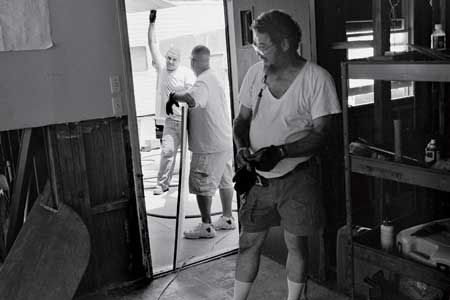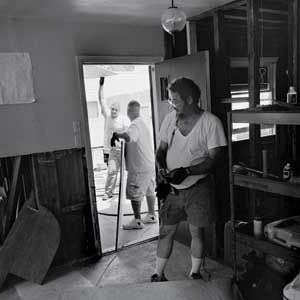
Nothing but Challenges
Johnny Moore is on the roof of his flood—wrecked home in New Orleans. But
he’s not waiting to be rescued.
The three—and—a—half feet of water that swamped the modest
brick—faced ranch he shared with his wife, Venus, has long since receded. Now, two years after
Hurricane Katrina struck and the levees failed, Johnny is saving himself by rebuilding his house the
only way he can: with his own hands. “I’m the contractor,” says the 62—year—old, who currently does
maintenance work at an area high school. “Ain’t nobody going to rebuild this house but me.”
Several of Johnny’s neighbors in the city’s Gentilly section are doing the same thing, as are countless
others who have decided to stop waiting on aid and start the reconstruction on their own.
Johnny returned home three weeks after the hurricane. Maybe it was longer. He’s not quite sure. “It was a
period that I love to forget,” he says. A jumble of debris was blocking the front door from the
inside, so he had to force his way in. The stench of rotting food in the freezer was sickening. The
wood parquet floors had buckled, mold had bloomed on the drywall, and anything that wasn’t made of
solid wood or metal had pretty much disintegrated. “Water was everywhere, in every pot and pan. You
were just hoping that your boots wouldn’t leak, and figuring out what to get rid of next.”
The mountain of trash Johnny piled in his front lawn was more than six feet high and 15 feet across. All
he was able to salvage was an antique mahogany bedstead and some hunting and fishing trophies, as
well as family photos that had hung high on a wall. The ceiling fan in the living room remains, but
its blades droop like the petals of a wilted daisy. “Everyone tells me to take that fan down, but I
say no. That’s my reminder of how long the water was in here.”
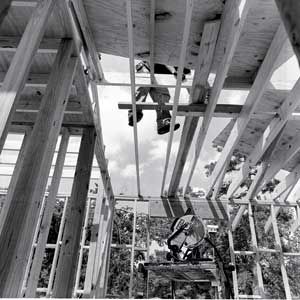
Together with Family
Johnny has yet to receive recovery grant money from the government, and he won’t be getting any money from insurance—he didn’t have any. Roof repairs completed two months before the hurricane cost more than expected, so Johnny made what in hindsight was a devastating decision: He paid the overage with the $880 he set aside to cover his homeowner’s insurance, letting the policy lapse.
What Johnny does have is family. “I’d be lost without my boys,” he says of sons Chip, 41, Troy, 40, and Nigel, 36. When the three brothers aren’t battling blazes as members of the New Orleans Fire Department, they are working alongside their dad.
Though their own houses were also badly damaged, the brothers’ priority now is to get their dad’s place in order so their mom can move back from Baton Rouge. She’s been living and working there as a home health nurse since evacuating from New Orleans with other family members to escape Katrina. Johnny stayed behind with his sons, who spent the days after the levees broke piloting their own fishing boat around the city, pulling survivors out of windows and plucking them off ooftops. Fire trucks were useless in the flood.
“I miss my mom. We all miss her,” Troy says. “It used to be that at the end of each day, I’d come here for dinner. I always knew when Mom was cooking.” Now, Troy and his brothers have to drive 75 miles to see Venus and to taste the Creole stuffed peppers and white beans with shrimp that reflect the Moore family’s mixed African, French, and Spanish heritage.
The cluster of postwar subdivisions that form the Gentilly area where Johnny and Venus have lived for the last 30 years was inundated with water for weeks after the nearby 17th Street Canal was breached. Among the city’s most racially and economically diverse areas, Gentilly ranks as one of the hardest hit, with only about 5,000 of its 16,000 houses occupied and more than 2,500 FEMA trailers still dotting the landscape.
One of those trailers is parked outside the Moore house. At first Johnny slept there only when he had to. But after shuttling from his job to family members’ houses—where he preferred to spend the night—to his own house—in—progress proved too burdensome, he moved into the trailer full—time.
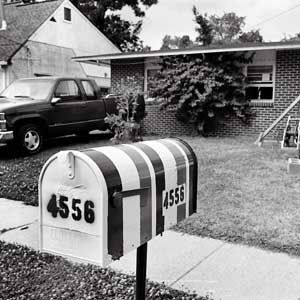
Getting to Work
Today, the Moore house is dry and empty. Johnny has stripped the majority of the place down to the studs and subfloor, and now he and his boys carry in lumber, setting up a staging area for a raised bedroom and bathroom they are building off the back. The addition is a necessity, not a luxury. When Venus comes home from Baton Rouge, she’ll be bringing along her elderly mother and mentally disabled sister—both of whom were displaced by the hurricane—to live in the existing two bedrooms.
Framing square in hand, Nigel climbs a ladder and straddles a ceiling joist to calculate the pitch of the new roof. He calls out the measurements to Troy, who transfers the angle to the end of a fresh 2×8 and uses a circular saw to cut a pointed end for a rafter. Over the whir of the saw and pops from the nail gun that Chip uses to secure the rafters in place, an iPod plays “Ain’t That Good News,” by Sam Cooke. It’s one of Johnny’s favorite songs, and he sings along while admiring the assembly line his sons have created.
The Moores have a lot to feel hopeful about. Besides the promise of reuniting their family, they are putting the house back together even better than it was before the storm. “If we are going to rebuild, we are going to rebuild right,” Johnny says. That means adding insulation in walls that previously had none, installing energy—efficient windows, updating electrical wiring, and replacing corroded steel plumbing with new copper lines.
Some improvements will have to wait, though. Johnny has already spent most of a low—interest, $10,000 disaster—recovery loan that he secured through the U.S. Small Business Administration on lumber. “The price of materials kills you,” he says. And forget about hiring professionals to do the work. “There’s so much demand that it’s hard to get somebody reputable to start a job, much less finish it,” Troy explains. “You can’t buy an electrician.” Luckily, the Moores don’t have to. Chip trained as an electrician before becoming a firefighter. Troy’s been doing his own plumbing work for years. And Nigel does just about everything else, including carpentry and tile. They learned most of their skills from their dad, a jack—of—all—trades who tinkers in his garage workshop.
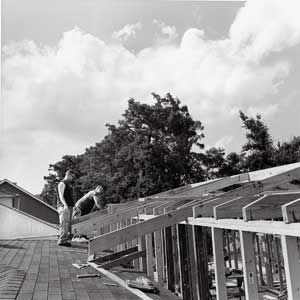
An Uncertain Future
By late afternoon, the roof framing is almost complete, and the guys are dripping with sweat in the hot sun. They retreat to Johnny’s shop for some water, and get a construction update from a neighbor who has come to borrow a C—clamp. They also discuss the status of Johnny and Venus’s appeal for a larger grant from The Road Home, a federally funded compensation program designed to give homeowners up to $150,000, minus any insurance or aid money they might have already received to cover their losses. The Moores were offered $60,000, but they’re afraid it won’t be enough to replace all that they’ve lost.
They hope a new offer comes soon, because they’ve got to get the house finished. The National Weather Service predicts as many as five major hurricanes will hit the Atlantic region this year, with peak season beginning now and running through the end of October. Johnny acknowledges that the next big storm could be even more devastating than Katrina. But he’s betting that improvements such as replacing the old single—pane windows with stronger double—pane ones will help hold back the wind, and building the new addition on 4—foot piers will foil floodwaters. Besides, giving up and moving away from his boys and the city he loves is not an option he’s willing to consider. “You’ve got to get rid of the fear. You can’t worry about dying. You’ve got to take the challenge,” Johnny says and climbs back on the roof to help Nigel nail new sheathing to the rafters.
